The Perfect Balance of Sweet and Savory
The first time I served honey garlic chicken at my restaurant’s tasting menu, a notoriously critical food writer closed his eyes and just sat there, silent for nearly thirty seconds. When he finally looked up, he simply said, “I need this recipe, chef.” That’s the power of perfectly executed honey garlic chicken—it renders even the most verbose critics speechless. It’s one of those dishes that seems decptively simple but harbors layers of flavor complexity that can transport you straight to culinary nirvana.
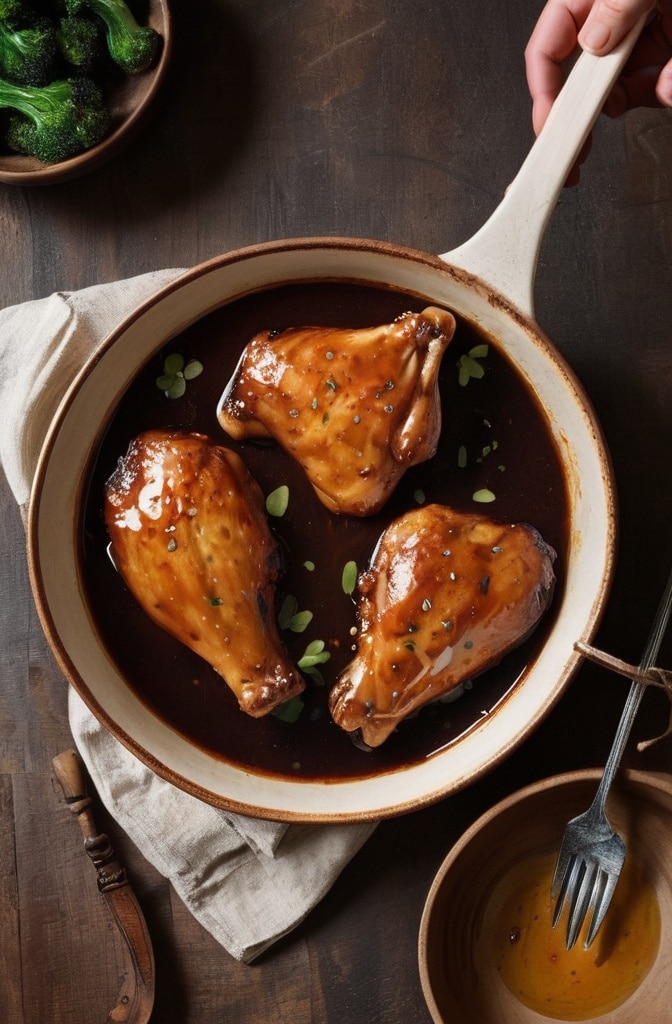
Honey garlic chicken represents the beautiful marriage of Eastern and Western culinary traditions. At its core, this dish celebrates the harmonious balance between sweet honey, pungent garlic, and savory soy—a combination that appears in various forms across Chinese, Korean, and fusion cuisines. What makes it truly special is its remarkable versatility and forgiving nature. The caramelization process transforms ordinary chicken into something extraordinary, creating that irresistible sticky glaze that clings to the meat and delivers an explosion of flavor with every bite.
Ingredients & Substitutions
For the Chicken:
- 2 pounds (about 1 kg) boneless, skinless chicken thighs
- ¼ cup all-purpose flour
- ½ teaspoon sea salt
- ¼ teaspoon freshly ground black pepper
- 2 tablespoons high-quality olive oil or avocado oil
For the Honey Garlic Sauce:
- 8 cloves garlic, minced (about 3 tablespoons)
- ½ cup honey (local wildflower preferred)
- ¼ cup low-sodium soy sauce or tamari
- 2 tablespoons rice vinegar
- 1 tablespoon toasted sesame oil
- 1 tablespoon grated fresh ginger
- ½ teaspoon red pepper flakes (optional)
- 1 tablespoon cornstarch mixed with 2 tablespoons cold water
For Garnish:
- 2 green onions, thinly sliced
- 1 tablespoon toasted sesame seeds
- Fresh cilantro leaves (optional)
Let’s talk chicken selection, coz this part’s actually crucial to your success. While I’ve specified thighs in this recipe, chicken breasts can absolutely work—just be extra vigilant about not overcooking them. Thighs are more forgiving and stay juicier, thanks to their higher fat content which also contributes to a richer flavor profile. For those avoiding poultry, firm tofu, tempeh, or even cauliflower florets can be substituted with slight adjustments to cooking times (tofu and tempeh need about half the time, while cauliflower requires par-boiling first).
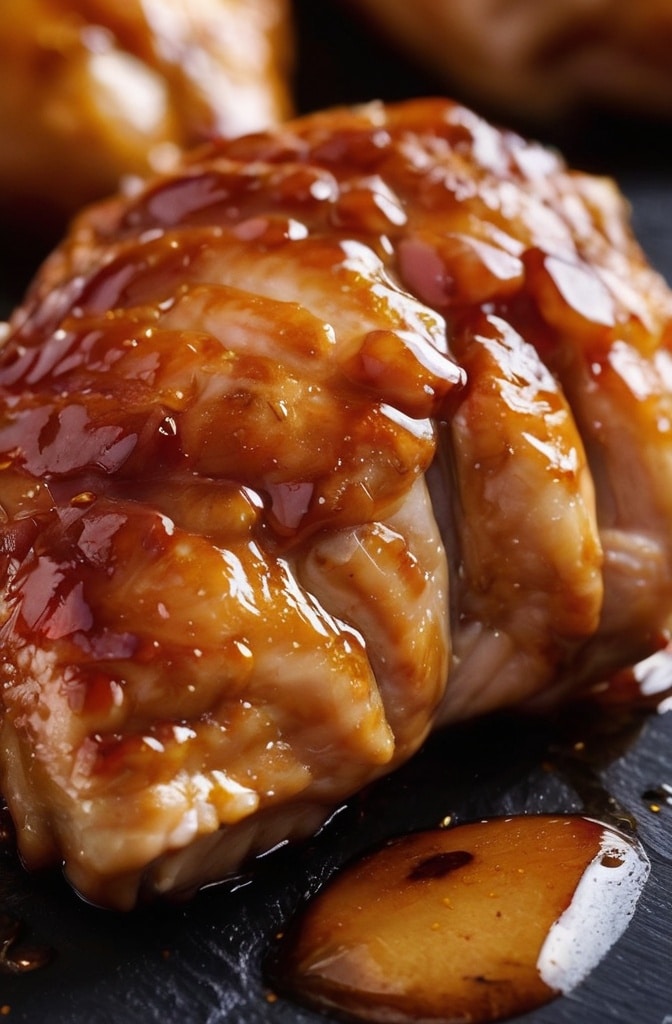
Honey forms the cornerstone of our sauce, but its not just any honey that’ll do. Opt for a high-quality, raw local honey with distinct floral notes—orange blossom or wildflower varieties offer wonderful complexity. For vegan alternatives, pure maple syrup or agave nectar work wonderfully, though they will impart slightly different flavor profiles. Maple syrup brings a deeper, more autumnal character, while agave offers a cleaner sweetness.
Fresh garlic is non-negotiable here. The pre-minced stuff in jars simply won’t deliver the same aromatic intensity. When selecting your garlic, look for firm bulbs with tight, unbroken skin—sprouted cloves develop bitter notes that can throw off your sauce. In an absolute emergency, you can substitute 1 tablespoon of garlic powder, but the complex flavor and caramelization potential will be significantly diminished.
Step-by-Step Instructions
Preparing the Chicken:
- Begin by thoroughly patting the chicken thighs dry with paper towels—this is perhaps the most overlooked yet critical step. Excess moisture is the enemy of proper browning and will cause your flour coating to become gummy rather than crisp. For even cooking, trim any excessively thick parts of the thighs to create uniform pieces.
- In a shallow dish, combine the flour, salt, and pepper. Dredge each chicken thigh in the flour mixture, shaking off excess. Many cooks make the mistake of heavy coating here—you want just enough to create a slight surface for the sauce to cling to, not a thick batter. Let the coated chicken rest on a wire rack for 5 minutes to help the coating adhere properly.
- Heat your oil in a large skillet over medium-high heat until it shimmers but doesn’t smoke. Working in batches to avoid crowding (another common mistake), place chicken thighs in the hot pan and sear for 4-5 minutes per side until golden brown. They don’t need to be fully cooked through at this stage—they’ll finish cooking in the sauce. Transfer browned chicken to a clean plate and drain all but 1 tablespoon of oil from the pan.
Creating the Honey Garlic Sauce:
- Using the same pan (those browned bits are flavor gold!), reduce heat to medium and add the minced garlic. Sauté for just 30-45 seconds until fragrant but not browned. Garlic burns insanely quick and will ruin your sauce with bitterness if you’re not careful. Keep it moving in the pan constantly. Some chefs even remove the pan briefly from the heat when adding garlic as extra insurance.
- Whisk in the honey, soy sauce, rice vinegar, sesame oil, ginger, and red pepper flakes if using. Bring the mixture to a gentle simmer, stirring occasionally. The sauce will appear quite thin at this stage—that’s perfectly normal. Allow it to bubble gently for about 2 minutes to meld the flavors. If your sauce looks like it’s reducing too quickly, lower the heat immediately.
- Return the chicken to the pan, turning each piece to coat with sauce. Cover and simmer on low heat for 7-10 minutes, until chicken is cooked through (internal temperature of 165°F/74°C). Give the cornstarch slurry a quick re-stir (it settles fast), then drizzle it into the simmering sauce while stirring constantly. The sauce will thicken quite dramatically within 1-2 minutes—once it coats the back of a spoon, it’s perfect. For a thinner sauce, use less cornstarch slurry; for thicker, glossier results, use the full amount.
Finishing Touches:
- Once your sauce has reached the desired consistency, taste and adjust seasonings if necessary. Some honey varieties are sweeter than others, so you might need to balance with a touch more soy sauce or vinegar. For a spicier version, add an additional ½ teaspoon of red pepper flakes or a drizzle of your favorite chili oil.
- Turn off the heat and let the chicken rest in the sauce for 5 minutes before serving—this resting period allows the meat fibers to relax and reabsorb some of the juices, resulting in more succulent chicken. Don’t rush this step; it makes a noticeable difference in the final texture.
- Transfer to a serving platter and generously spoon the sauce over the chicken. Sprinkle with sliced green onions, toasted sesame seeds, and cilantro leaves if using. For an extra layer of flavor, grate a bit of fresh orange zest over the finished dish—the citrus notes provide a brilliant counterpoint to the rich sauce.
Cooking Techniques & Science
The magic of honey garlic chicken lies in several critical chemical reactions that transform simple ingredients into a complex flavor bomb. First and most important is the Maillard reaction—that beautiful browning process that occurs when proteins and sugars are heated together. When you sear the flour-dusted chicken properly, you’re creating hundreds of new flavor compounds that simply don’t exist in raw or boiled chicken. This is why proper drying and not overcrowding the pan are so essential; steam is the enemy of the Maillard reaction.
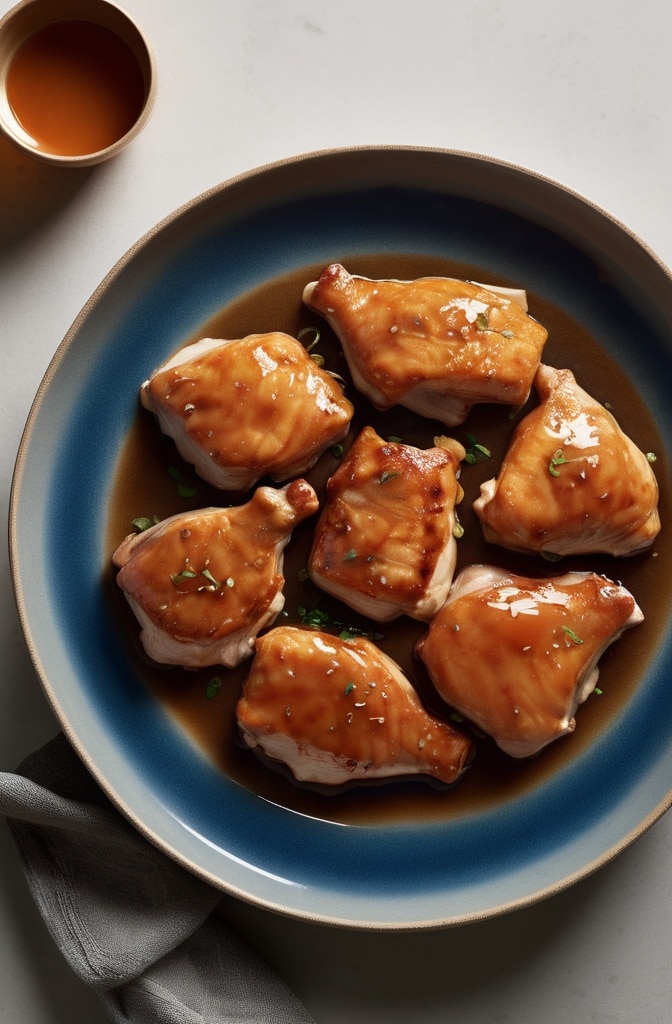
Caramelization is the next crucial process. As honey heats, its complex sugars break down and form new compounds, shifting from straightforward sweetness to something deeper and more nuanced with slight bitter notes that balance the overall flavor profile. This process begins around 320°F (160°C), which is why controlling your heat is so important. Too hot, and caramelization rushes into burning; too cool, and you’ll never develop those complex flavors.
Theres a fascinating chemical transformation that happens with garlic too. When garlic cells are damaged through mincing, an enzyme called alliinase converts alliin into allicin, producing that pungent, raw garlic flavor. But heat changes everything. As garlic cooks, allicin breaks down into new compounds that are mellower and sweeter. The brief sautéing we do here hits the perfect middle ground—developing sweetness without losing all of the garlic’s characteristic punch.
The reduction process concentrates flavors through evaporation, but theres more happening than simple water loss. As the sauce reduces, the ratio of sugar and salt to water increases, intensifying flavor. Meanwhile, the starches from the flour-coated chicken gradually release into the sauce, helping to thicken it naturally even before adding the cornstarch slurry.
For equipment, a heavy-bottomed skillet—preferably cast iron or carbon steel—provides optimal heat retention and distribution. These pans develop what culinary scientists call a “fond” (those browned bits stuck to the pan) better than non-stick surfaces, and that fond is essential to building depth of flavor in your sauce. If you’re scaling up for a crowd, a large Dutch oven works beautifully and transitions easily from stovetop to oven if needed.
Serving & Pairing Suggestions
Honey garlic chicken deserves thoughtful plating that showcases its glossy, caramelized appeal. For a restaurant-worthy presentation, arrange the chicken pieces slightly overlapping on a warmed platter with raised edges to contain the sauce. Pour the sauce generously over and around the chicken, letting it pool slightly. The garnishes should be scattered with artistic abandon rather than geometric precision—the casual scattering of green onions, sesame seeds, and herb leaves creates visual texture that makes the dish feel abundant and inviting.
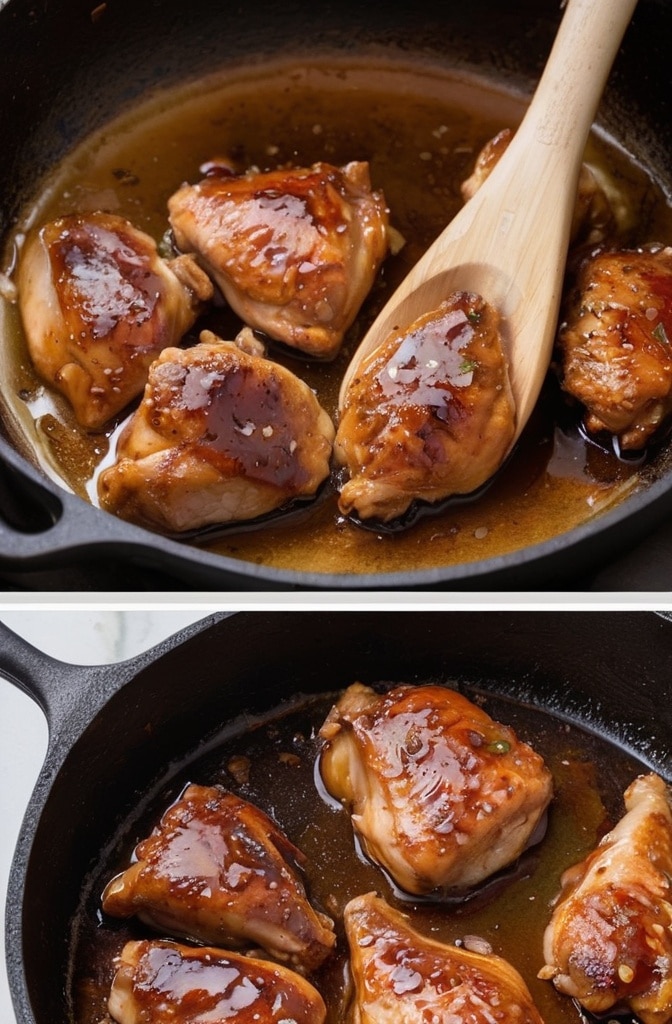
For family-style service, consider nestling the chicken atop a bed of steamed jasmine rice which acts as the perfect canvas to absorb the incredible sauce. Alternatively, use a wide, shallow serving bowl with the chicken arranged in the center and sauce pooled around—this creates a dramatic visual effect when brought to the table. Always serve with extra sauce on the side; trust me, your guests will want it.
Rice is the traditional pairing, but don’t limit yourself. Honey garlic chicken works beautifully with a variety of bases. Egg noodles tossed in sesame oil provide wonderful texture contrast. For a lower-carb option, cauliflower rice or spiralized zucchini “noodles” make excellent foundations. My personal favorite is serving it alongside purple forbidden rice, whose nutty flavor and striking color create both flavor harmony and visual drama.
Vegetable pairings should provide contrast in both texture and flavor. Consider quick-pickled cucumbers with rice vinegar and a touch of sugar—their crispness and acidity cut through the rich sauce beautifully. Steamed or stir-fried bok choy with a simple garlic and ginger treatment provides a clean, vegetal counterpoint. For a truly impressive spread, add a side of miso-glazed eggplant to echo the sweet-savory theme while introducing new flavor dimensions.
For beverage pairings, the honey and garlic combo creates interesting challenges and opportunities. Off-dry Riesling works magnificently, with its slight sweetness harmonizing with the honey while its acidity balances the richness. For beer lovers, a Belgian-style wheat beer with citrus notes complements without overwhelming. Non-alcoholic options include jasmine tea served cold or a yuzu sparkling water that provides refreshing contrast.
Conclusion
Honey garlic chicken exemplifies how a handful of common ingredients can transcend into something extraordinary through proper technique and understanding of flavor dynamics. The success of this dish hinges on achieving perfect balance—between sweet and savory, tender and caramelized, complex and comforting. It’s accessible enough for weeknight cooking yet sophisticated enough for entertaining.
The beauty of mastering the foundational method is that you can then improvise your own versions. Consider adding a tablespoon of miso paste to the sauce for deeper umami notes, or incorporate citrus with orange or yuzu juice. Experiment with different vinegars—black vinegar creates an intriguing dimension with its malty complexity. For textural variation, try dusting the chicken with potato starch instead of flour for an even crispier exterior, or add cashews or water chestnuts for surprise crunch elements.
Remember that the principles at work here—proper searing, balanced sauce reduction, and thickening techniques—apply across countless dishes in various cuisines. Once you’ve mastered honey garlic chicken, you’ve actually equipped yourself with transferable skills for dozens of other recipes. That’s the hallmark of truly valuable cooking knowledge—techniques that transcend any single dish and become part of your culinary intuition.
Frequently Asked Questions?
My sauce always ends up too thin. What am I doing wrong?
The most common issue is improper cornstarch preparation or application. Always mix cornstarch with cold water (never hot) until completely smooth before adding to your sauce. Add it gradually while the sauce is at a simmer, not a rolling boil. If your sauce still isn’t thickening, your heat may be too low—cornstarch needs to reach about 203°F (95°C) to achieve full thickening power. Also, be patient! The sauce will continue to thicken slightly as it cools.
Can I make honey garlic chicken ahead of time for a dinner party?
Absolutely, but with some modifications. Prepare the dish up to the point of thickening the sauce, but slightly undercook the chicken (internal temperature around 155°F/68°C). Cool completely, then refrigerate. When ready to serve, gently reheat in a covered pan on low heat until the chicken reaches 165°F. You may need to add a splash of chicken broth if the sauce has thickened too much during storage. Garnish just before serving for the freshest appearance.
The garlic burns before I can get it properly sautéed. Any tricks?
This is a common challenge with garlic-forward dishes. Try adding a tablespoon of water to the pan along with the garlic—this creates steam that moderates the temperature and helps prevent burning while still allowing flavor development. Alternatively, use the “cold pan method”: place garlic and oil in a cold pan, then turn on the heat and warm gradually, which provides more control over the cooking process.
Is there a way to make this dish less sweet without losing the honey flavor?
Several approaches work well here. First, increase the ratio of soy sauce to honey (try 1:1 instead of 1:2). Second, add more acidity with an extra tablespoon of rice vinegar or a squeeze of fresh lemon juice. Third, incorporate more ginger and red pepper flakes to balance the sweetness with heat and pungency. Lastly, consider using a stronger-flavored honey like buckwheat, which has bitter notes that naturally counterbalance its sweetness.
How can I adapt this recipe for meal prep with chicken breasts instead of thighs?
For meal prep using chicken breasts, cut them into strips against the grain rather than cooking whole breasts—this helps prevent the dreaded dry chicken breast syndrome when reheating. Reduce the initial sear time to 2-3 minutes per side, and the simmer time to 5-6 minutes. For storage, keep the chicken and sauce separate, combining only when reheating to prevent the sauce from being completely absorbed. When reheating, use gentle heat and stop as soon as the chicken reaches temperature to avoid overcooking.
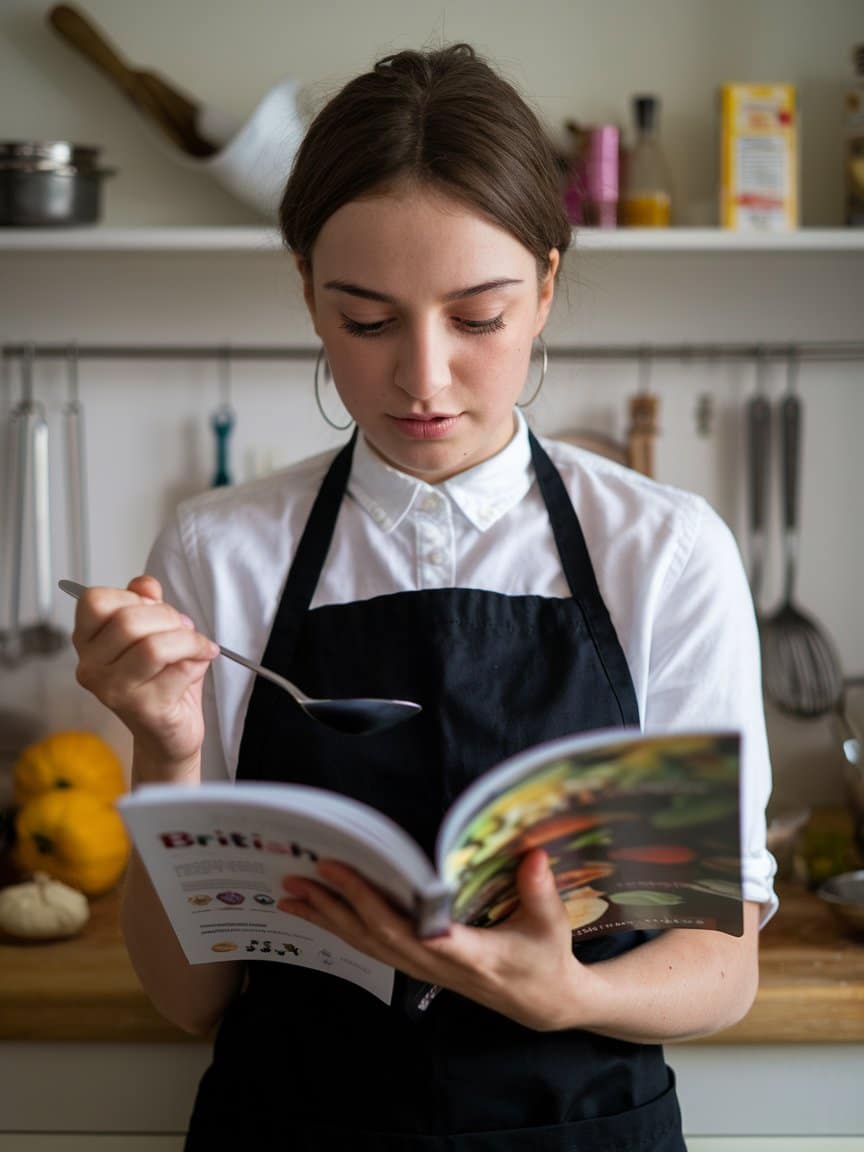
Veronica is a passionate food enthusiast with over three years of experience in exploring and writing about diverse cuisines. Her expertise lies in reviewing restaurants, sharing creative recipes, and discovering the latest food trends. As the voice behind FoodieRecap.com, Anju brings fresh perspectives and culinary insights to her audience.
